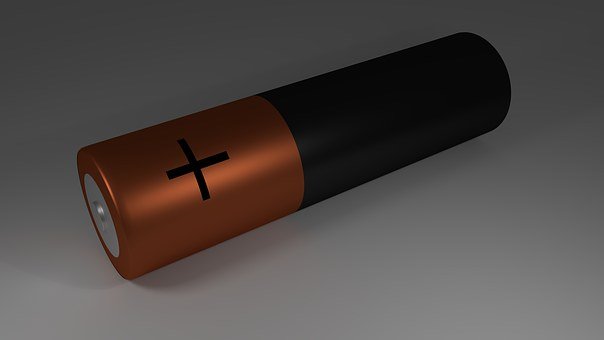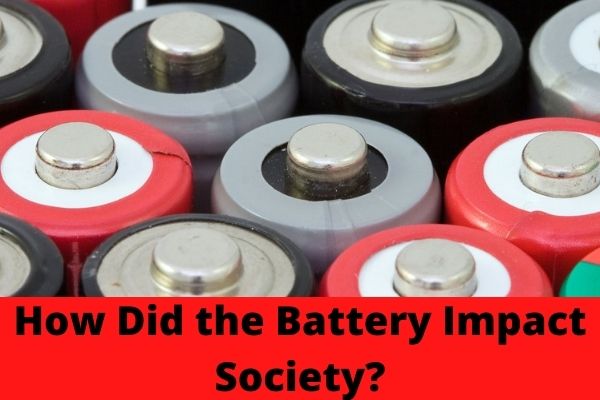Battery reverse polarity is the case when the source (for charging) or load cables are connected incorrectly. It is a very common issue. But can you use a reverse polarity battery?
Some people believe this is a hoax, while others believe that if it happens, the battery will only be of limited value. Because the current flows are now working against how the interior plates were supposed to work.
In this article, I am going to discuss in detail the reverse polarity of a battery, the reasons behind it, whether or not you can use it, and everything else you need to know.
What Happens If Battery Terminals Are Reversed?
Car batteries are a little more complicated than they appear to be. There are certain restrictions to charging your automobile when jump-starting it. As the transfer of energy from one battery to another is not as straightforward as it appears.
Reversing the battery terminals can result in significant harm to the battery, its electrical components, and even yourself. An automobile battery’s positive and negative terminals each utilize 12 volts of current.
The positive terminal of the cable is powered by +12V, while the negative terminal is powered by -12V.
If the positives and negatives are reversed, the battery will attempt to compensate by converting the negative 12 volts to a positive charge, resulting in a massive burst of power and massive amounts of heat.
Needless to say, it will not be easily tolerated by the system or its components. And depending on specific variables, it will result in serious and irreversible damage.
1. Damage to Jumper Cables
The jumper wires would be the first to suffer the wrath and consequences of an experiment if there was an instant rush of electricity.
The high heat generated will immediately melt the insulators on the jumper cables, permanently attaching them to the battery, which will be next in line as the plastic top melts and bends.
2. Damage to the Battery
The acidic fluids inside the battery will boil due to the intense heat created by the reaction, causing the battery to deform. Furthermore, it may spill and cause harm to nearby parts, and you may be unable to prevent it.
3. Blown Fuse
Whether or not you have an explosion depends on the other components and the state of the batteries. But blown fuses and wires will almost certainly be found in your vehicle.
4. Damage to the Alternator
The vehicle that is charging the defective battery may sustain mechanical damage as well. The increase in power will have a negative impact on the alternator, possibly causing irreversible damage.
5. Physical Damage
Jump-starting with the cables reversed can aggravate a bad battery or one that hasn’t been used in a long time. The faulty battery may even explode, causing injury to anyone nearby.
Can Reverse Polarity Damage Electronics?
Can you use a reverse polarity battery without damaging the electronics? Hre’s the thing: reverse polarity can quickly damage your gadgets when plugged into an outlet that is wired incorrectly.
This accelerates when there is no built-in mechanism to safeguard them from reverse polarity. Reverse polarity can also harm or short-circuit your devices, such as televisions, radios, phones, and laptops.
Because electronic equipment only controls voltage in one way, when the electrical flow is reversed, the internal components can overheat or short-circuit.
Will GFCI Work With Reverse Polarity?
The GFCI does not need to know which wire is grounded because the current between the two wires is different. Because the test button does not rely on the EGC like a plug-in tester, polarity should not be an issue.
A GFCI that won’t reset with reversed polarity must employ the EGC.
Can You Use A Reverse Polarity Battery?
The battery will be ruined for all intents and purposes. You could potentially charge it negatively and continue to use it, but your plates are made of lead dioxide on the positive side and sponge lead on the negative side.
This would now be reversed. The inverted battery will only work to a limited extent because it is no longer formatted correctly.
The truth is that a lead-acid battery cannot reverse its polarity without the help of external stimulation.
How To Fix Reverse Polarity of A Battery?
If a battery has reverse polarity by error, the following method will help in correcting it.
- Discharge the battery completely – connecting a low amp-rated light bulb with no cutout circuitry should do this.
- Correctly connect a charger. If the battery refuses to charge, try using a stronger charger for a few seconds (e.g., a 24-volt charger on a 12-volt battery) before switching to the correct charger at its lowest settings.
Note: Deep discharges damage internal components, therefore the battery’s life expectancy will be shortened in all circumstances.
Will A Car Start If The Battery Is Backward?
A vehicle will not start if the battery is put backward. If the battery is connected backward, a fuse, designed to protect the electronic components will blow.
If a vehicle doesn’t have a fuse designed for this function (nearly all automobiles do), electrical current will flow backward through the car’s systems, including the ECU, transmission control unit, and other components.
When current travels backward through diodes in electronics such as the ECU/ECM (Engine Control Unit / Module), it is not a problem.
Disconnecting the battery wires is not a frequent way to damage the Engine Control Unit / Module.
The vast majority of them are built to tolerate reverse polarity. If a diode fails, the ECU/ECM can be removed and inspected in the worst-case scenario.
How Do You Test For Reverse Polarity With A Multimeter?
To test reverse polarity with a multimeter, follow these steps:
- Plug black lead in the middle input on the bottom of your multimeter. Then, you can plug the red lead on the right input. You can now turn on the multimeter by turning the knob in the middle into Voltage AC.
- You can place one lead in the outlet’s longer vertical opening. It is a 0-volt neutral contact. You can also place the other lead on the shorter vertical opening, which is a 120-volt hot contact.
If your multimeter shows a reading, then there’s a right polarity since the voltage is transported from hot to neutral contact.
- Place one lead in the neutral opening and the other lead in the ground opening. If your multimeter doesn’t show a reading, there’s no reverse popularity.
Thus, the voltage is moved between neutral and ground contracts. Both have zero voltage.
Why Is Reverse Polarity Dangerous?
The neutral and hot wires in your electrical receptacle or circuit must be connected to the correct terminals. If you don’t, you’ll be surprised with a polarity reversal. It may even end up posing a threat to your home or vehicle.
While you have reverse polarity, current flows through your outlet even when your appliances are turned off. Meanwhile, even if there is no current flow, mishaps can occur if you mistakenly touch the damaged or incorrect section of the gadget.
Electrical outlets with reverse polarity can cause fires, shocks, and short circuits. In opposite polarity, even a simple floor lamp is dangerous.
Reverse polarity also has the disadvantage of causing harm to home appliances and other electronic gadgets.
If the live voltage is applied to the improper part of the circuit, the device will remain activated even if it has been turned off.
Additionally, there is a substantial risk of electric shock and overheating.
frequently Asked Questions (FAQs):
What happens if you charge a battery with the wrong polarity?
The battery may explode if you reverse the charge to the battery.
Does polarity matter when charging a battery??
Yes, it absolutely matters.
How do you fix reverse polarity?
By switching the wires to their corresponding sides.
Final Words
If you have made it to this part of the article, you already know whether can you use a reverse polarity battery or not.
If you desire peace of mind and a more convenient life, reverse polarity testing with your multimeter is recommended. This will save you money in the future by preventing excessive expenses caused by reverse polarity.
Related Posts:

